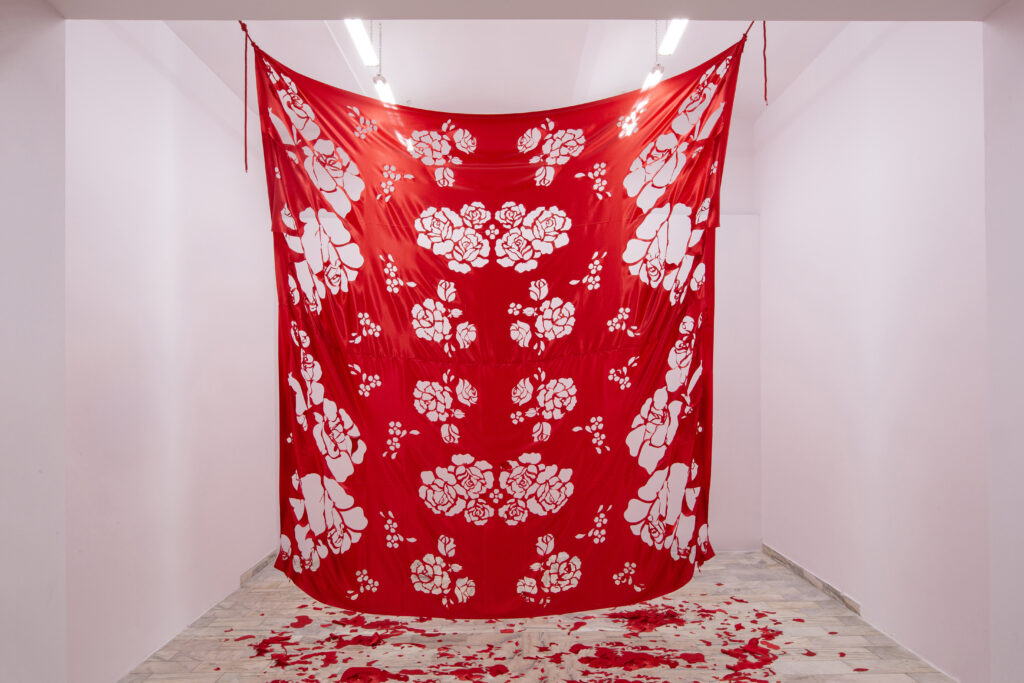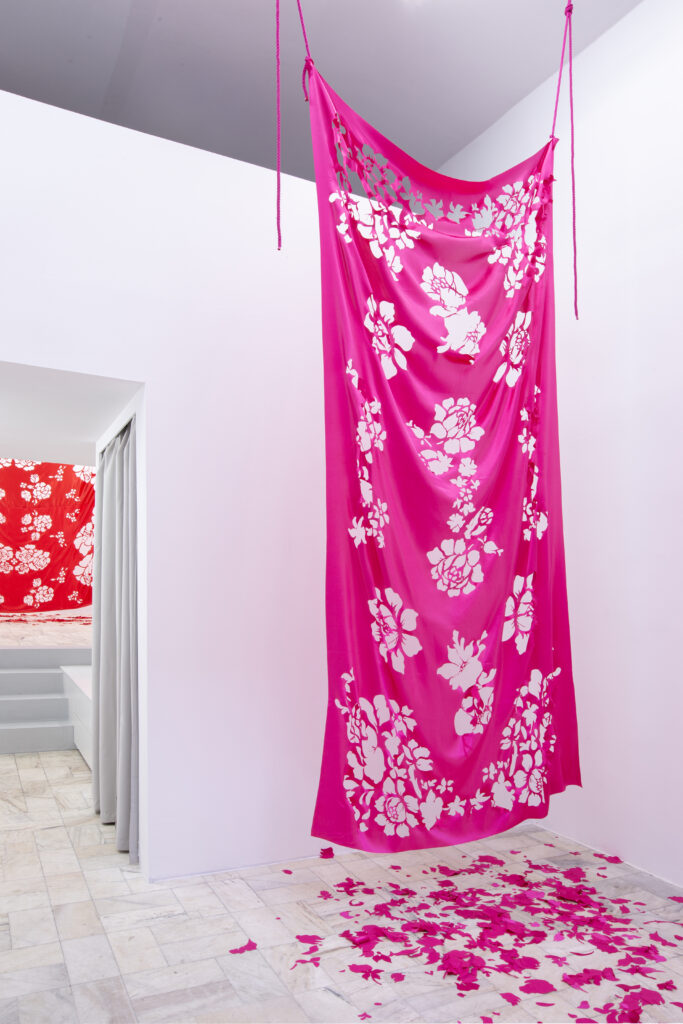



Rewoven Roots *2024
Gallery Piana Foundation
side- specific installation / 300x150x8 cm
In her exhibition “Rewoven Roots” artist transforms and re-connects with her roots on her own poetic terms. Born in Silesian Beskids, where folklore still plays a big role in Polish society, the artist transforms traditional folk scarves once worn by women.
The headscarf was of great importance, as it symbolized a woman’s status. This element of a woman’s closet also spoke of the social and material position of the person wearing it. Traditionally, the bride wore a garland on her head, usually made of flowers. It embodied the purity of the girl walking down the aisle. After the wedding, the woman had to cover her hair with a headscarf or cap. Colorful woolen headscarves printed in distinctive floral patterns and rose motifs, popularly known as “tybetki” became popular in the Kraków countryside as early as the late 19th century. Krakowian, Laszka, Podhalan and Highlander women from the Żywiec, Pieniny and Orava regions wore not only head scarves, but also skirts, stockings and shoulder scarves sewn from Tibet fabric as early as the end of the 19th century.
Today, contemporary floral-patterned headscarves, are an important part of folk fashion, reminding us of the links between tradition, femininity and social change.
Read more: